Ever hear French and think, “Wow, that sounds amazing!”? You’re not alone. French is super cool, with a fancy sound and a long, interesting history. Plus, France has delicious food, beautiful art, and tons of fun stuff to see and do.
So, you want to learn French? Awesome! But where to start? Don’t worry, because I’ve got 10 super fun tips to get you going on your French adventure. No textbooks are required, just good vibes and a love for all things French!
1. Discover Your 'Why': Sparking Passion for Learning French
Before diving in, spark your intrinsic motivation. What ignites your interest in the French language? Is it the captivating literature, the desire to connect with French-speaking communities, or simply the love for the language itself? Identifying your “pourquoi”(why) will fuel your perseverance during challenging moments.
Maybe you’ve always dreamed of strolling through the streets of Paris, engaging in lively conversations with locals in their native tongue. Or perhaps you’re passionate about French cinema and long to understand your favourite films without subtitles. Whatever your motivations may be, connecting with your “why” will fuel your perseverance and keep you inspired as you navigate the challenges of learning a new language.
So take some time to reflect on what sparks your interest in French. Write down your reasons, visualise your goals, and let your passion for the language guide you as you embark on this exciting adventure.
French Language Course for Beginners
2. Mastering French Pronunciation: Getting to Know the Alphabet
The French alphabet might seem familiar at first glance, but it holds unique pronunciations. Familiarise yourself with the sounds of each letter and practice basic phonemes. Resources like online pronunciation guides or language learning apps can be immensely helpful in mastering this initial hurdle.
The French alphabet, while sharing some similarities with the English alphabet, has its own set of unique pronunciations that can pose challenges for learners. To navigate this initial hurdle, it’s essential to familiarise oneself with the sounds of each letter and practice basic phonemes.
For example:
- A – Pronounced like “ah” as in “chat” (cat).
- B – Similar to English, pronounced “bay” as in “banane” (banana).
- C – Can be pronounced like “s” as in “cinq” (five) or “k” as in “chat” (cat).
- D – Pronounced “day” as in “deux” (two).
- E – Depending on its placement in a word, it can have various pronunciations, such as “euh” as in “mer” (sea) or “eh” as in “le” (the).
- F – Similar to English, pronounced “ef” as in “fruit.”
- G – Can be pronounced like “zh” in English “pleasure” or “g” as in “garçon” (boy).
- H – Usually silent in French words, as in “hôtel.”
- I – Pronounced like “ee” as in “livre” (book).
- J – Pronounced like the “zh” sound in English “pleasure” as in “jaune” (yellow).
- K – Not commonly used in native French words, often seen in loanwords.
- L – Similar to English, pronounced “el” as in “lire” (to read).
- M – Similar to English, pronounced “em” as in “manger” (to eat).
- N – Similar to English, pronounced “en” as in “nom” (name).
- O – Pronounced like “oh” as in “bonjour” (hello).
- P – Similar to English, pronounced “pay” as in “pain” (bread).
- Q – Often followed by “u” and pronounced like “k” as in “quatre” (four).
- R – A unique French sound, produced at the back of the throat, as in “rue” (street).
- S – Can be pronounced like “s” as in “soleil” (sun) or “z” as in “maison” (house).
- T – Similar to English, pronounced “tay” as in “temps” (time).
- U – Pronounced like “oo” as in “lune” (moon).
- V – Similar to English, pronounced “vay” as in “voiture” (car).
- W – Not native to French words, often seen in loanwords.
- X – Can have various pronunciations, like “ks” as in “examen” (exam) or “gz” as in “xylophone.”
- Y – Pronounced like “ee-grec” as in “yeux” (eyes).
- Z – Similar to English, pronounced “zed” as in “zéro” (zero).
By spending time practising these sounds and getting to know how they change in different words, you’ll get better at pronouncing the French alphabet. Using tools like online pronunciation guides like The french alphabet with Learn French With Alexa or language learning websites like can be super helpful along the way. They give you extra support and make the learning process smoother.
3. Build a Strong Foundation of French Language
Don’t be intimidated by the vastness of the French language. Begin with fundamental vocabulary and grammar concepts. Focus on mastering greetings, essential verbs like “être” (to be) and “avoir” (to have), and commonly used pronouns. This strong foundation will serve as a springboard for further learning.
Start with the basics: fundamental vocabulary and grammar. Begin by mastering everyday greetings like “bonjour” (hello), “au revoir” (goodbye), and “merci” (thank you).
When it comes to essential verbs, focus on “être” (to be) and “avoir” (to have). For instance:
1. “Je suis” means “I am.” (e.g., “Je suis heureux.” – I am happy.)
2. “Nous avons” means “We have.” (e.g., “Nous avons une voiture.” – We have a car.)
3.”Ils/Elles sont” means “They are.” (e.g., “Ils sont étudiants.” – They are students.)
Learn French Language Skills – Common Verbs now!
4. Personalise Your French Learning Approach
Everyone learns differently. Experiment with various learning methods to discover what resonates with you. Do you thrive in structured environments like classrooms or prefer self-paced learning through apps and online courses? Explore different resources like textbooks, podcasts, language exchange platforms, and even French music and movies – find what sparks your joy and keeps you engaged.
Here are a few examples of learning styles for French:
Audio Learners
1. Listen to French podcasts or audiobooks.
2.Find a language exchange partner to practice speaking and listening.
3. Watch French movies and TV shows with subtitles.
Visual Learners
1. Use flashcards with pictures and French words.
2. Watch French Youtube channels that teach the language.
3. Find French comics or illustrated books.
Kinesthetic Learners
1. Take a French cooking class and learn vocabulary related to food.
2. Label objects in your house with French words.
3. Act out dialogues in French with a partner.
App Learners
1. Use language learning apps like Duolingo, Babbel, or Memrise.
2 .There are apps specifically designed for French verb conjugation or pronunciation practice.
Remember, the best way to learn French is to find a method (or combination of methods) that you enjoy and that keeps you motivated. Don’t be afraid to experiment and find what works best for you!
5. Surround Yourself with French: Dive into the Language Everywhere
Try to surround yourself with the French language as much as possible. Listen to French music, watch French movies or TV shows, and follow French social media accounts. The more you expose yourself to French, the more familiar it will become.
Instead of watching English-speaking TV shows, try watching French ones with subtitles. This way, you’ll start to pick up on common phrases and expressions.
Here are a few popular language learning methods:
1. Communicative Approach: This method focuses on developing communication skills through real-life situations and interactions. Learners practice speaking, listening, reading, and writing in meaningful contexts, with an emphasis on understanding and being understood rather than perfect grammar.
2. Total Physical Response (TPR): TPR is a method that involves using physical movement to aid language learning. Learners respond to commands and instructions in the target language by performing corresponding actions. This method is particularly effective for beginners and young learners.
3. Direct Method: The Direct Method emphasizes learning through immersion, where the target language is used exclusively in the classroom. Grammar and vocabulary are taught inductively through context, and students engage in conversational activities from the start.
4. Audio-Lingual Method: This method relies heavily on repetition and drills to reinforce language patterns and structures. Learners listen to model sentences and repeat them, gradually building their proficiency through practice. This approach is often associated with language labs and audio recordings.
6. Keep Repeating for Improvement
Learning any language requires consistent practice. Dedicate a specific time each day, even if it’s just for 15 minutes, to actively engage with the French language. Utilise flashcards, and spaced repetition apps, or even write short sentences and dialogues to solidify your understanding. Remember, consistency is key to language acquisition.
Don’t be afraid to practice speaking, writing, and listening to French regularly. Repetition helps reinforce what you’ve learned and builds confidence in language use.
Set aside time each day to practice French vocabulary or have short conversations with a language partner. Over time, you’ll notice improvement in your language skills.


7. Embrace Mistakes: Learn and Grow from Errors
Making mistakes is an inevitable part of the learning process. Don’t be discouraged by them; instead, view them as valuable opportunities for growth. Embrace a growth mindset, learn from your errors, and don’t hesitate to seek clarification from native speakers or language tutors.
If you mispronounce a word or use the wrong grammar structure, don’t dwell on it. Instead, note the correct form and try again. Each mistake is a chance to become more proficient in French.
8. Find a Language Buddy: Connect and Converse
Connect with fellow French language learners or native speakers. Conversation is paramount in language acquisition. Engage in language exchange platforms, online communities, or even local French clubs to practice speaking and listening in a supportive environment.
9. Track Your Progress
Learning a new language is a rewarding journey. Track your progress, celebrate your achievements, and acknowledge your dedication. This sense of accomplishment will fuel your motivation and keep you moving forward.
10. Embrace the Culture: Dive into the French World
The French language is intricately woven with the rich tapestry of French culture. Explore French literature, music, cinema, and historical landmarks. Understanding the cultural context behind the language will not only enhance your learning but also cultivate a deeper appreciation for the French way of life.
Remember, learning the French language is a marathon, not a sprint. Embrace the process, celebrate your progress, and enjoy the beautiful journey of discovering the French language and its captivating world. Now, go forth, chers amis (dear friends), and embark on your delightful French language adventure!
- All Courses
- QLS Endorsed Single Course798
- Mega Bundles367
- Management Courses329
- Technology Courses235
- Teaching Courses196
- Business Courses174
- Health Courses102
- Law Courses83
- Marketing Courses67
- Development Courses54
- Job Guarantee Programme53
- Counselling Courses38
- QLS Endorsed Single Course with Free Certificate37
- Engineering Courses21
- Creative Courses20
- Agriculture Courses6
- Regulated Courses6
- Psychology3
- Science Courses2
- Arts Courses1




0 responses on "Learn French: Top 10 Tips for Your Language Journey"